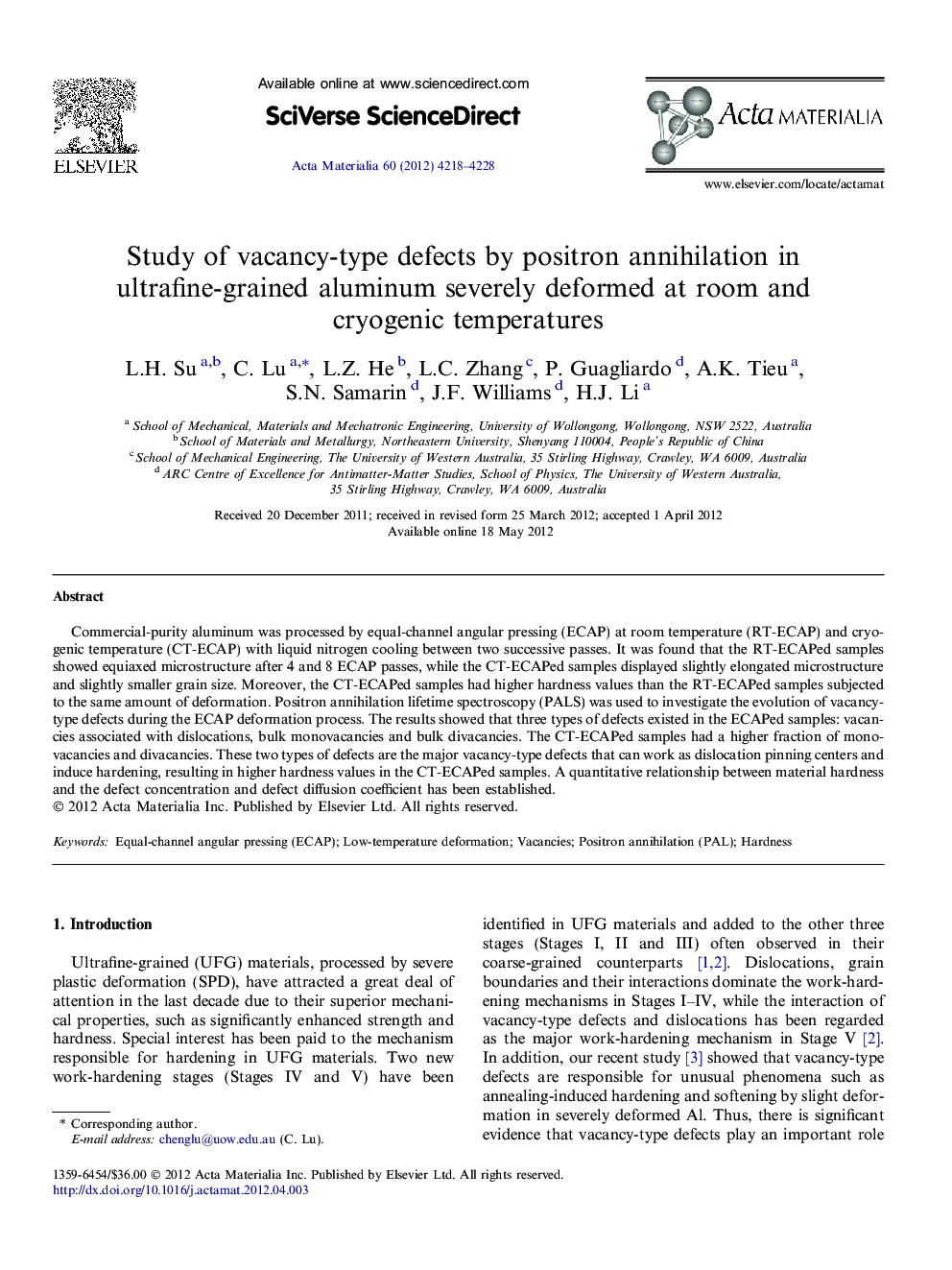| Article ID | Journal | Published Year | Pages | File Type |
|---|---|---|---|---|
| 1446669 | Acta Materialia | 2012 | 11 Pages |
Commercial-purity aluminum was processed by equal-channel angular pressing (ECAP) at room temperature (RT-ECAP) and cryogenic temperature (CT-ECAP) with liquid nitrogen cooling between two successive passes. It was found that the RT-ECAPed samples showed equiaxed microstructure after 4 and 8 ECAP passes, while the CT-ECAPed samples displayed slightly elongated microstructure and slightly smaller grain size. Moreover, the CT-ECAPed samples had higher hardness values than the RT-ECAPed samples subjected to the same amount of deformation. Positron annihilation lifetime spectroscopy (PALS) was used to investigate the evolution of vacancy-type defects during the ECAP deformation process. The results showed that three types of defects existed in the ECAPed samples: vacancies associated with dislocations, bulk monovacancies and bulk divacancies. The CT-ECAPed samples had a higher fraction of monovacancies and divacancies. These two types of defects are the major vacancy-type defects that can work as dislocation pinning centers and induce hardening, resulting in higher hardness values in the CT-ECAPed samples. A quantitative relationship between material hardness and the defect concentration and defect diffusion coefficient has been established.
